It has been another week of hard work and fun here at Red Cannon Expedition (RCE)!
Every time I think we are ready to complete a component of this project I realize how little I know about what it actually takes to create one of these vehicles. There is and unfathomable amount of work that goes into each and every step of the process. Though I am helping primarily with the build process, I am constantly reminded of the hours of planning and strategizing, along with precision thinking and implementation that takes place when creating this work of art. Just when I think we are about to finish one aspect of the project I am brought back to reality with a new to-do list of things to be completed.
This realization was brought to my attention once again on Monday morning when, after spending extra time waxing the upper section of the top of the Jeep, Dion reminded me that we need to do ten coats of wax as opposed to just one. Though I thought we were ready to get started fiber glassing on Monday morning, I pulled out the can of wax and got to it.
I spent all day Monday waxing on and off to complete a total of ten coats of wax on the upper section of the Jeep topper.
When I got to the shop on Tuesday morning we pulled out the other sections of the jeep that needed to be prepared for the fiber glass. This consisted of two additional pieces of the body: the back door, and the top of the cab of the jeep where the topper rests.
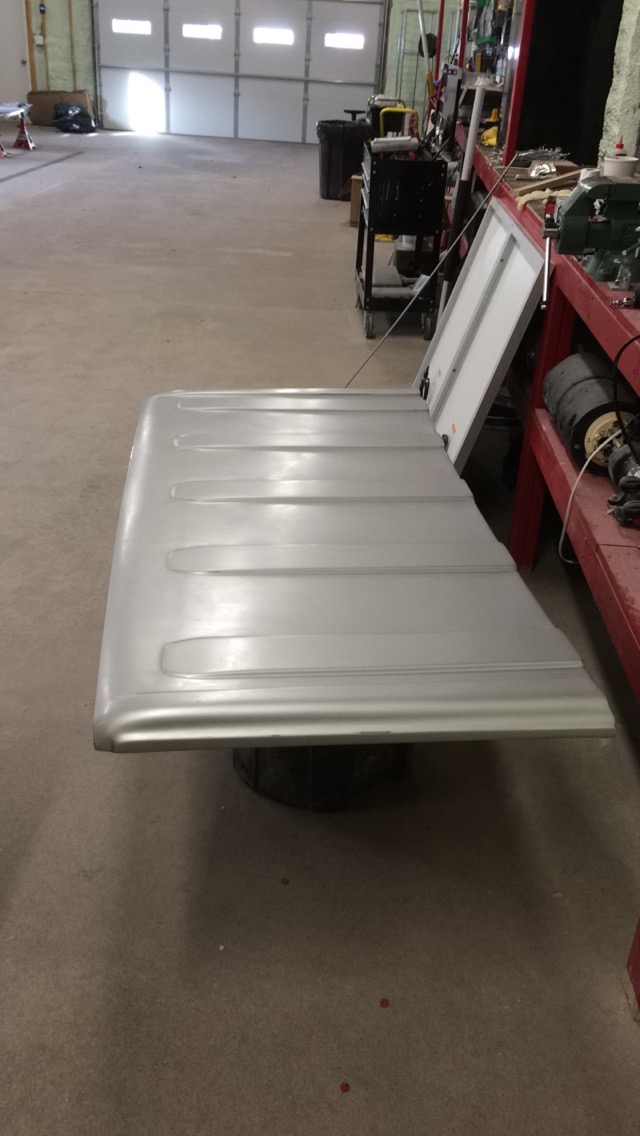
^The top of the cab of the jeep where the topper rests.
Tray, another employee of RCE, took the door and I took the top of the cab.
Tuesday then consisted of repeating the process we had done on the top section of the topper with our different pieces. By the end of Tuesday I had my piece stripped of extra paint (which took a surprisingly long time to get off) and had begun sanding with 220 sandpaper.
On Wednesday morning I finished sanding the piece fully, as well as the post sanding cleaning process: compressed air to remove particles, dry rag and compressed air to get the rest, and a full wipe down of diluted alcohol.
Having stripped, sanded, and cleaned the piece, I was left to do the ten wax coats in the afternoon on Wednesday and the morning on Thursday.
Thursday afternoon was devoted to a crew meeting to instruct us on the procedures and safety of the mold (fiberglass) process, as well as developing a plan for the order in which we would create the molds. After learning the process and brainstorming the options we decided that we would begin with the upper part of the topper (the biggest piece) and then do the smaller pieces.
On Friday morning we got suited up and began the fiberglass process. Having never dealt with a material like that, it was challenging for me to get the hang of spreading the fibers. We were using fiber strands that the gun would chop up and shoot out onto he resin that we previously applied and it was hard to spread it evenly.
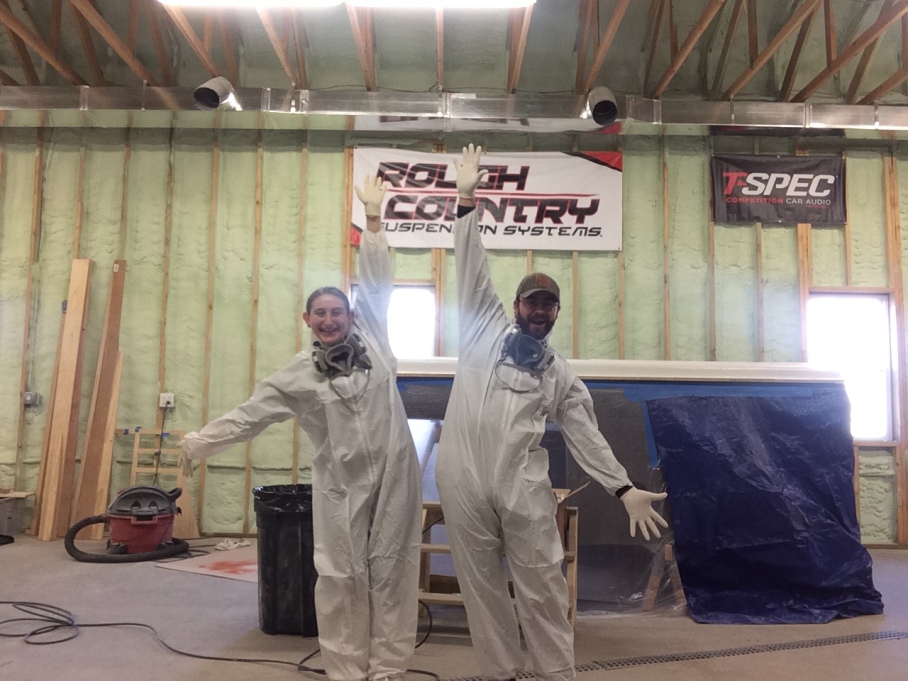
^Dion and I were excited to start fiberglassing!
On Friday afternoon we completed the first layer of fiber glass on the upper portion of the topper, only five more layers to go!
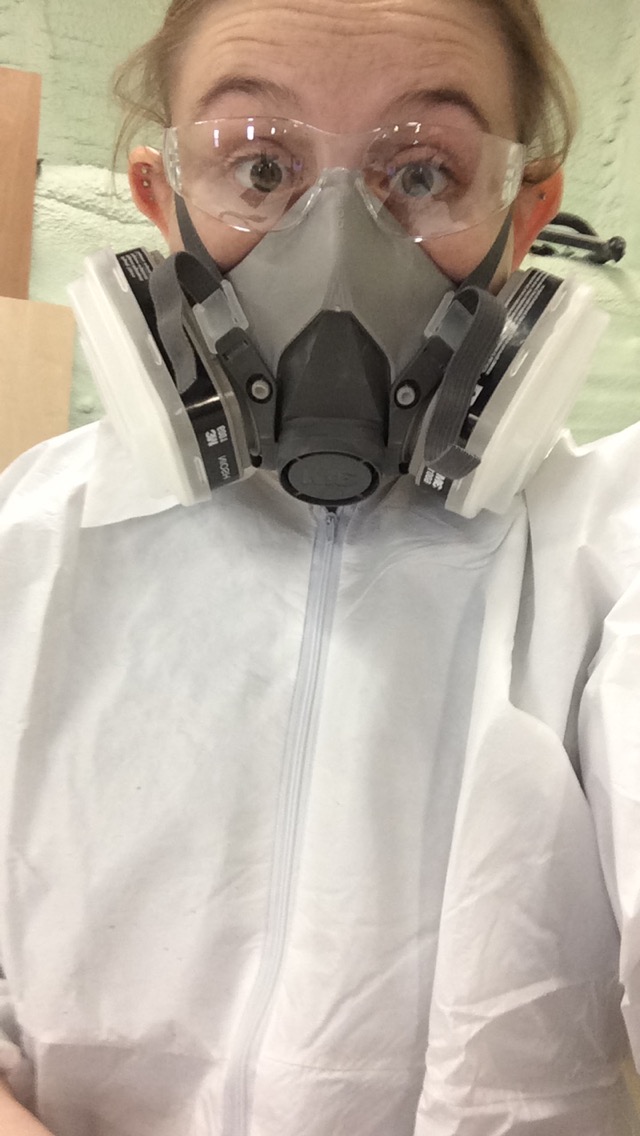
^Fully suited up, respirator, and protective eye-ware. Safety comes first at RCE.
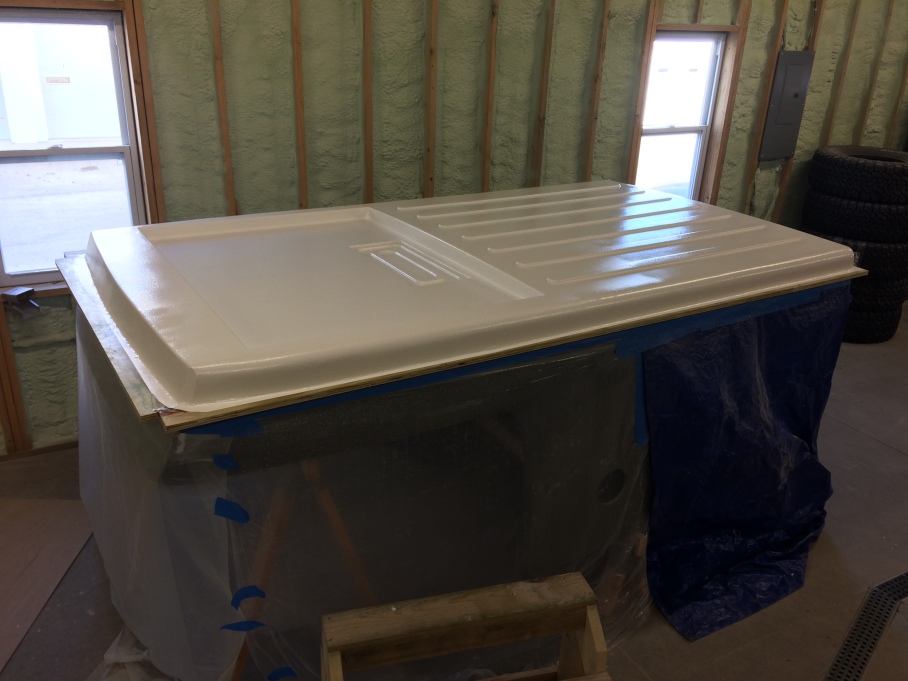
^The initial jell coat goes on before the resin coat.
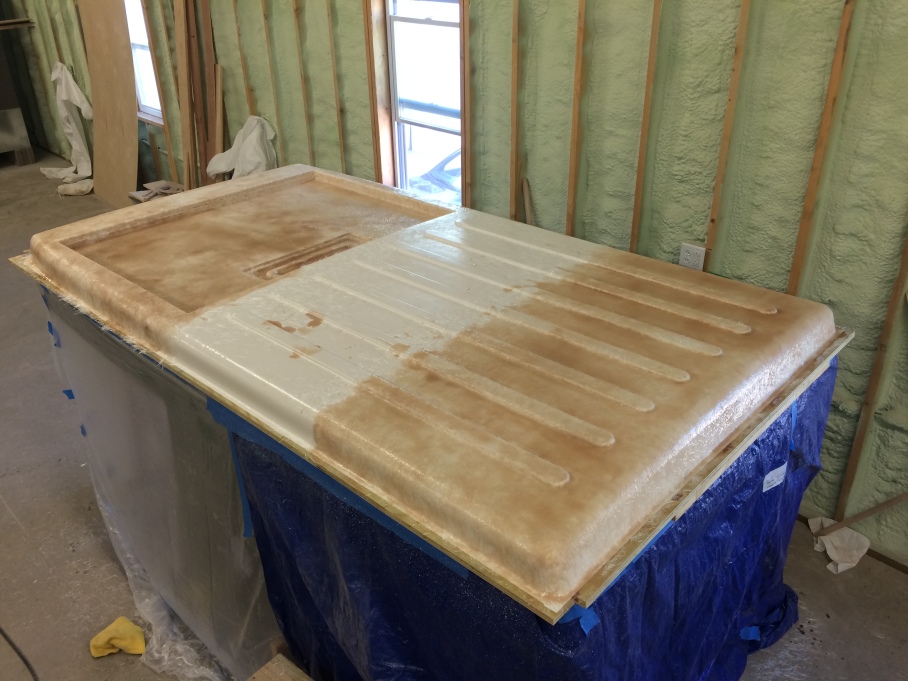
^The morning session of fiberglassing, done in two different sections.
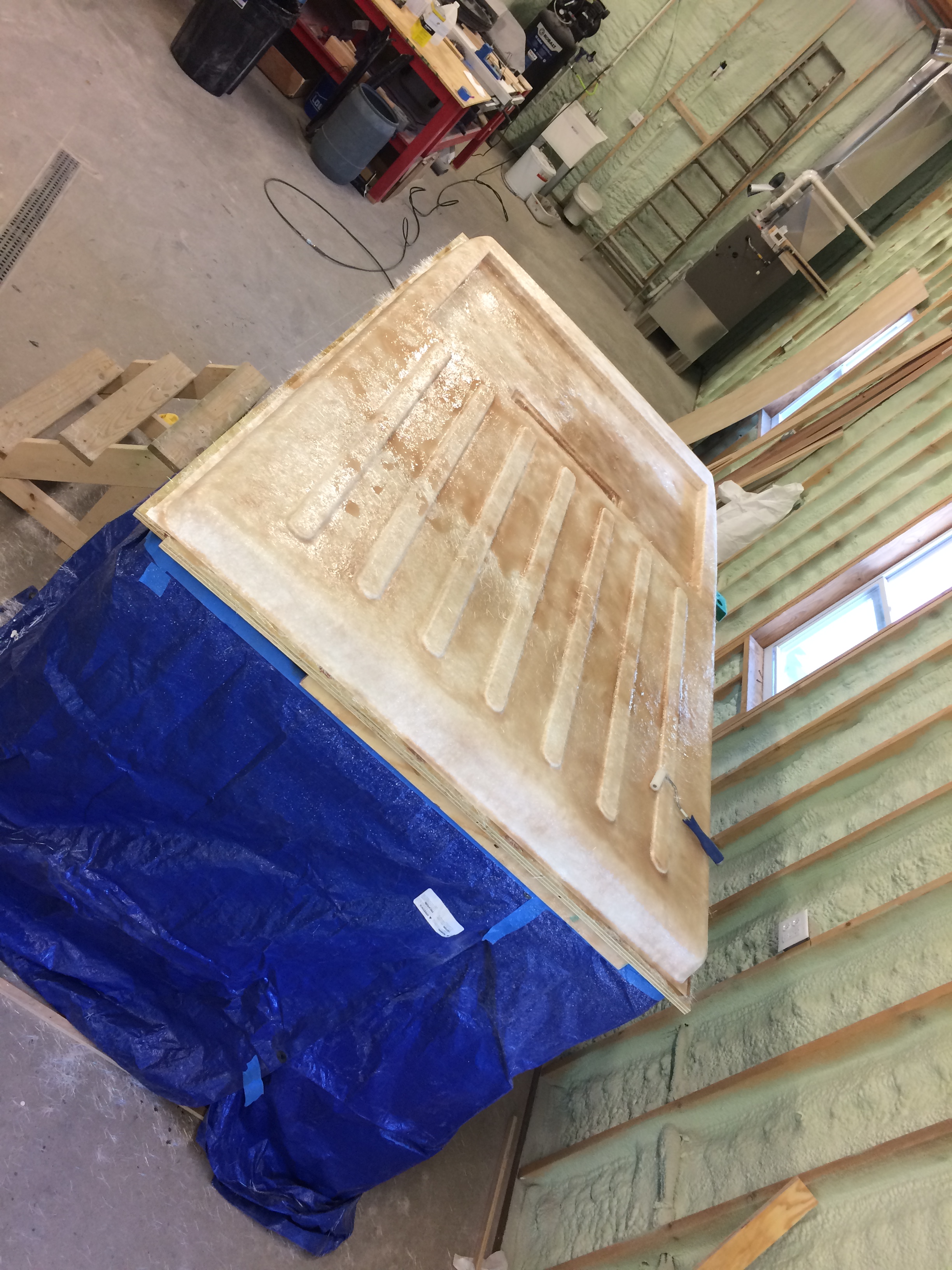
^In the afternoon after the two sections had a chance to dry we added the third connecting section and did a partial second coat on the front portion.
Saturday I spent my morning writing my summative paper on my RCE experience which can be found here: https://lilithshoemaker.wordpress.com/2015/12/19/internship-summery-at-red-cannon-expedition/
During the fiber glassing I was aware of how strong the VOCs in the resin was and we decided that this is where we wanted to start with our sustainability. We are currently researching the options of sustainable resins for further fiber glassing projects. The main alternative that is currently being used un sustainable fiberglassing is epoxy resin. Epoxy resin is said to have insignificant emissions from abrasion and/or chemical decomposition of components which could endanger human health and the environment.
Some of these epoxies such as SuperSap claims to have a 50% reduction in emissions of the standard chemical resin.
We want to further this research and buy a more sustainable product for our next project
Here we have completed another very successful week at Red Cannon Expedition, the final week of my internship. Please check back with us next week for further updated to our project!